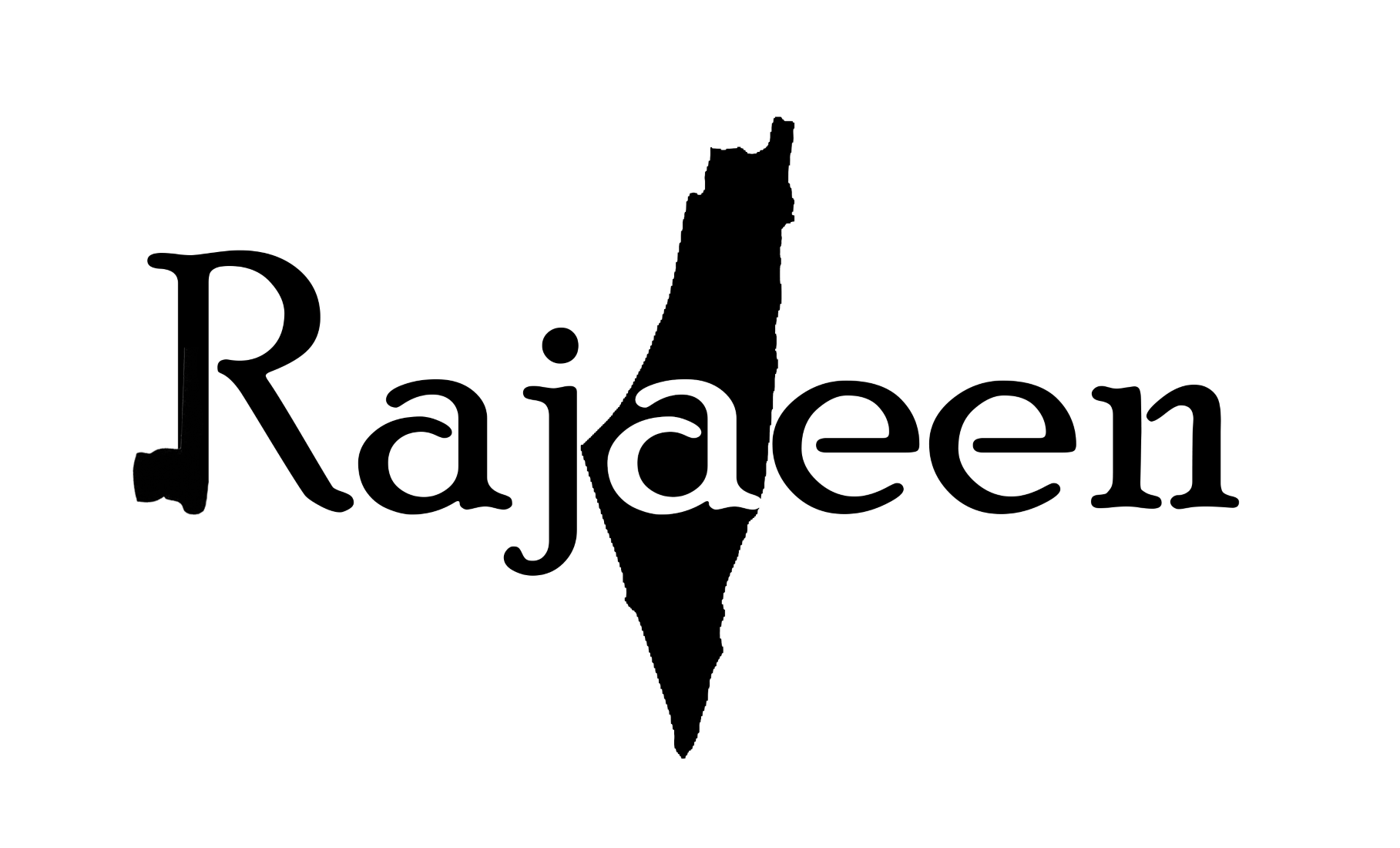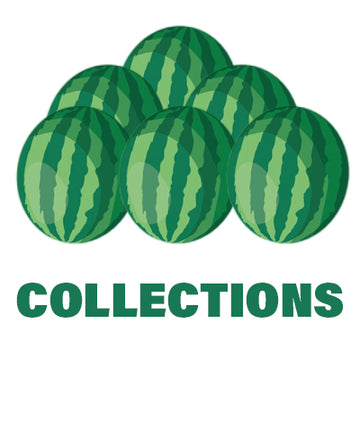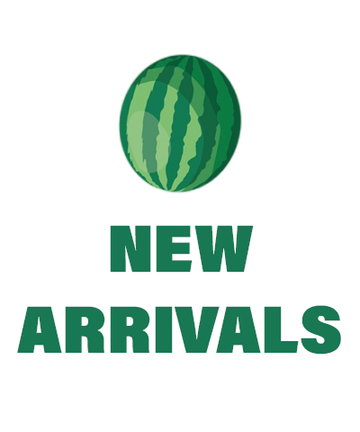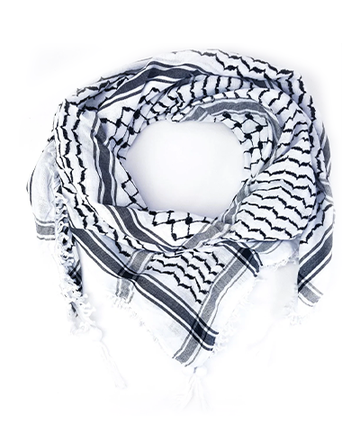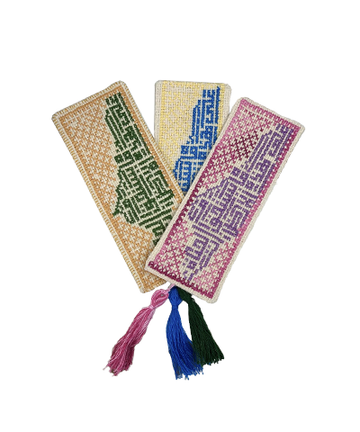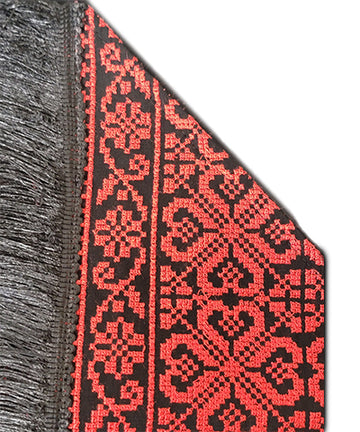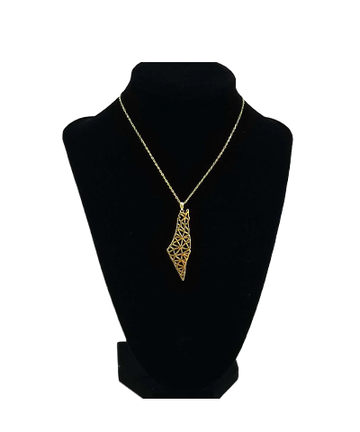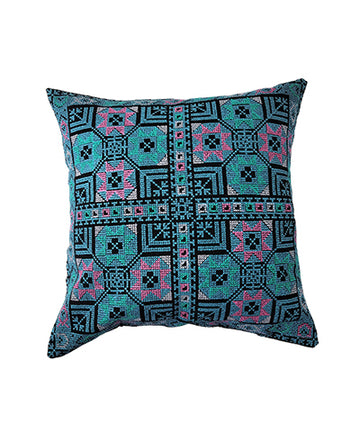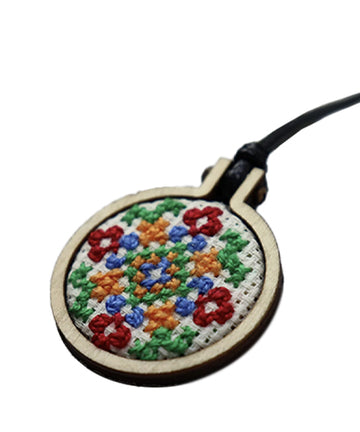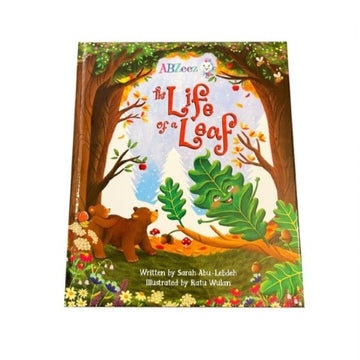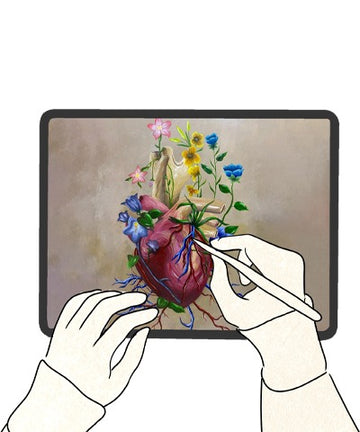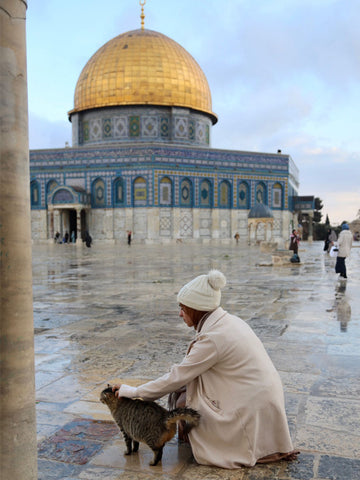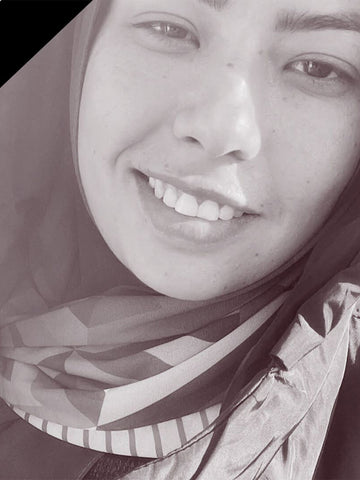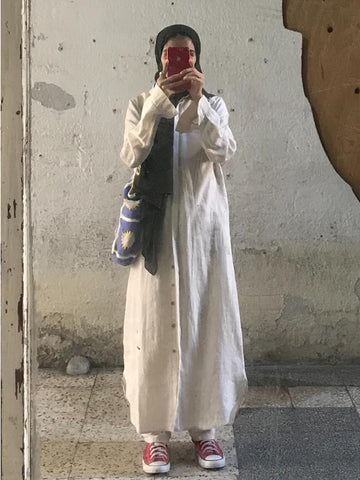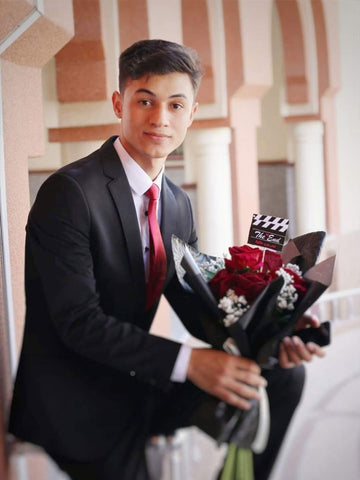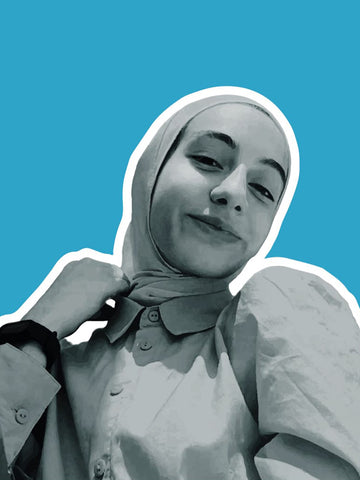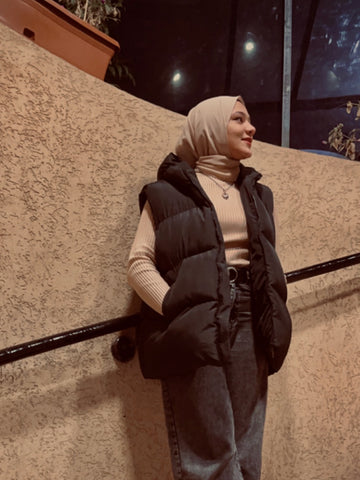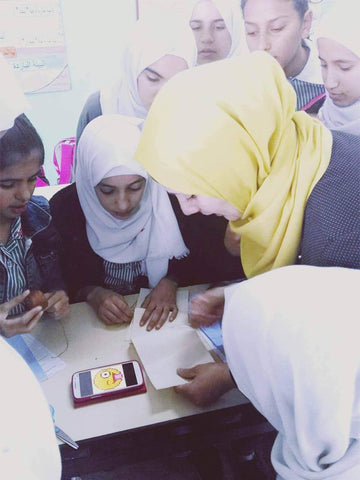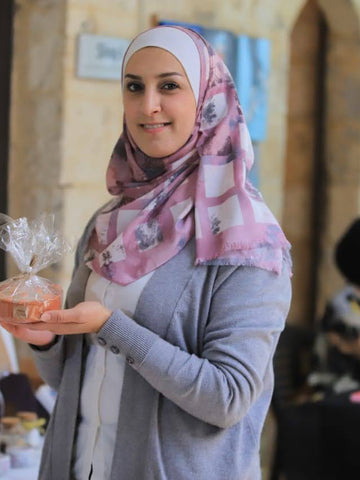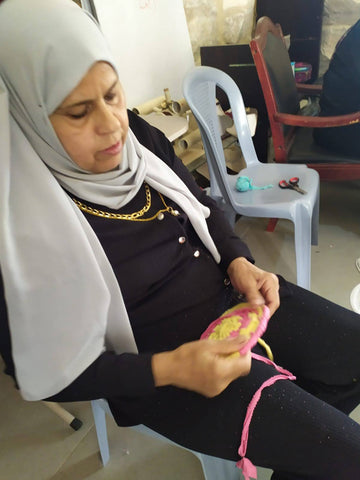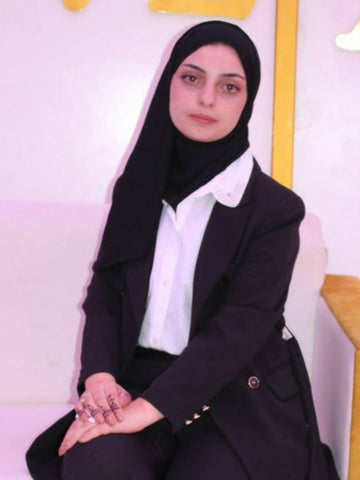What is Embroidery?
Embroidery is the art of decorating fabric using needle and thread, sometimes with materials such as beads or shells added to it. Palestinian embroidery is an important symbol of Palestinian culture; it is unique in terms of its cultural and social meaning.
The History of Palestinian Embroidery (Tatreez)
The history of the Palestinian tatreez patterns go back to the era of the Canaanites thousands of years ago, and it is part of the culture and heritage of the Palestinian people, tens of years colors are groups of shapes and colors, in each drawing represent the story of the embroidered dress and the story of who wears it.
Palestinian occasions such as weddings are never complete without seeing women dressed in traditional Palestinian embroidered dresses. These dresses are considered folk art and are passed by Palestinian women from generation to generation. Each thread tells different tales about each city, village, and identity, which has evolved a lot in the past 3000 years, dating back to the Canaanite era.
The Meaning of the Palestinian Embroidery
In their particular designs, Palestinian embroidered dresses are thought to portray a certain message or code regarding the women wearing them. The different patterns on the dress, in addition to the woman's social status and age, are thought to make the village, family, and marital status obvious.
The messages portrayed by each unique style may be easily understood by some, but unfortunately, to most, they are a mystery. Information is hidden between the intertwining threads and different colors.
Those geometric shapes embroidered were passed on to mothers and daughters from their grandmothers. Embroidery was taught at a very young age. As soon as they were old enough to learn to thread a needle, they began to narrate their stories and preserve their identity on their luxurious masterpieces.
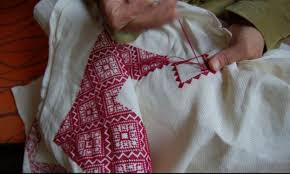
Palestinian women did their best to preserve the patterns and styles of their grandmothers before them to maintain the traditional look of these dresses. In the end, the traditional Palestinian structure of these designs was maintained, but on various occasions, the women would improvise, adding their personal touches and creating a modern twist to these timeless pieces.
The Geographical Locations and the Parts that Palestinian Tatreez Patterns Cover
Some graphics remained restricted to their specific geographical locations. For example, the Ramallah area was known for its use of palm tree painting. The Hebron region, with what is called Tent Al Basha; the area of Jaffa, painted with cypress and a base; And the Gaza area, with a pillow or scissors pattern. Beersheba and its region were known for their use of screening drawings. Although such drawings may distinguish one region from another, we also find them in multiple shapes and different combinations spread all over Palestine. Nevertheless, the Palestinian tatreez patterns cover four main parts of a garment:
1- The Giba (the neckline): it is the closest piece to the face. It means in the Palestinian dialect (dress collar).
2- The cape: It is the lower back part of the garment.
3- Al-Baneeqa: It is the aspect of the dress.
4- The sleeve: it is the entrance to and exit of the hand from the garment.
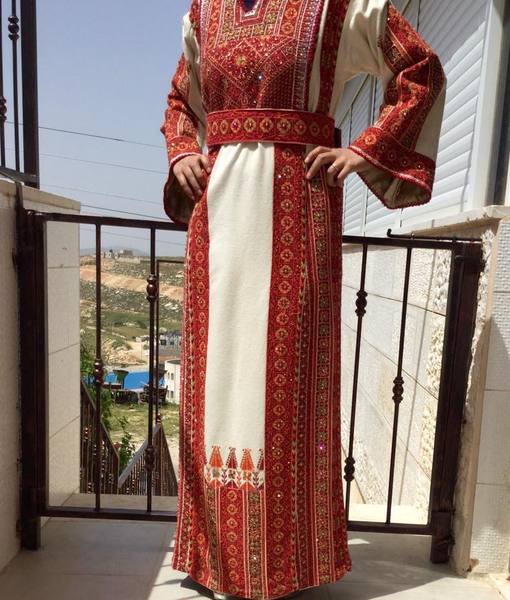
Traditional Palestinian embroidery was performed on locally hand-woven linen cloth called "Rumi" or "monastic" or on a fabric that was a mixture of linen and cotton, sometimes called "Qarawi" or on specially woven cotton fabric to make it easy to count the threads and show the stitch clearly.
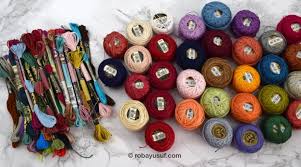
The threads used in embroidery are of four varieties:
1- Silk thread: The most expensive and heaviest thread. The embroidered dress weighs eight kilograms and is only worn during ceremonies.
2- Cotton thread: It is embroidered on all kinds of clothes, and it is cheap, but some cotton threads fade, and some colors fall on the colors of others.
3- The brocade thread: In northern Palestine, they embroider the jacket and shortening, and in the white Dajani dress it is embroidered on the top of the chest and the violin on velvet fabric.
4- Machine thread: Embroidered on Satin fabric only by machine. This thread is also used to connect the parts of the garment, and they are embroidered on the seam with silk thread.
Buy your Authentic Palestinian Embroidery
